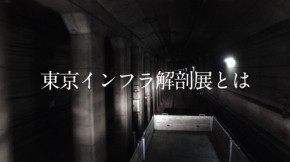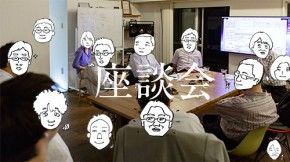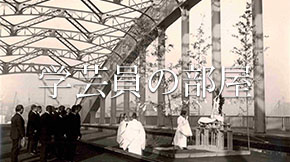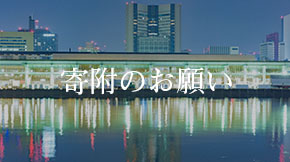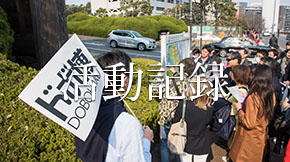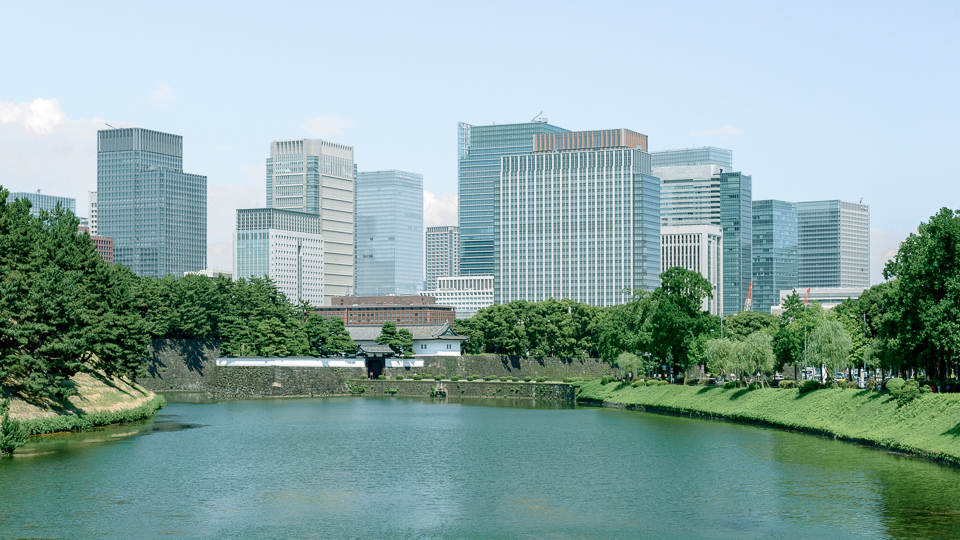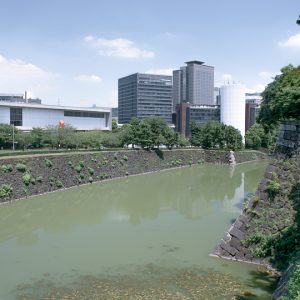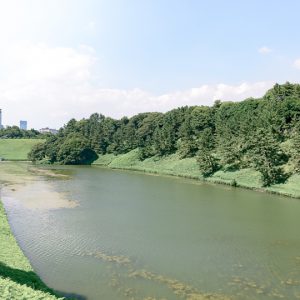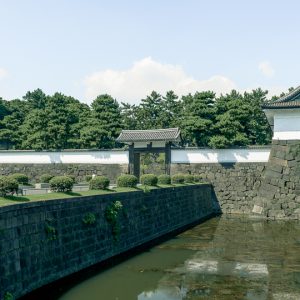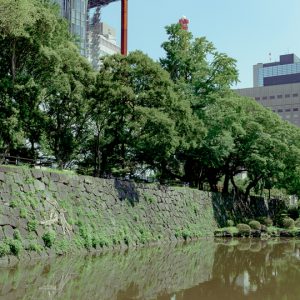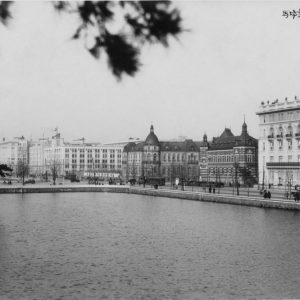Edo Castle in the Dohkan era was defended by rivers in the south, east and north side from the Hibiya estuary to the junction with the Kanda River by changing the route of the Hirakawa River, and by the cliff line on the west side.
The Tokugawa shogunate first landfilled the Hibiya inlet and started to build the Dosan moat. In the east side, they vastly utilized the natural configuration such as building the inner moat by using the deep stream eroded in the ice ages, while on the west side they made artificial change of the features; “surgical operation”.
From the watershed at Hanzomon, the highest altitude of about 17 meters, water flows down in the north through the Chidoriga-fuchi and Ohte-fuchi to Kikyo Moat in the north, and in the south through Sakurada moat to the Hibiya moat, which is the lowest of 1.3 meters, and finally into Edo-minato. Ushiga-fuchi utilizing river terraces and Chidoriga-fuchi damming the downstream of the Kojimachi plateau were dams in the center of the city and they were used for water supply inside the castle.
The water gathered in the Hibiya moat was flowed from the Uchiyamashita moat ahead to the Edo Minato via the outer moat and the Shiodome River, and a part of the landfilled Uchiyamashita moat is now left in the pond of Hibiya Park.
In recent years, as a district representing the capital Tokyo formed on the history of multilayered urban development ranging from the early modern times to modern age, urban design study was conducted to coordinate a number of management bodies and public spaces of high quality are being created, such as changing the open space remained at the bending road in the Edo era to a viewpoint where you can overlook the moat and totally designing various street furniture and the pavement in details as well.
Until the Yodobashi water purification plant was abolished in 1965, the surplus water of Tamagawa Waterworks was discharged from the Hanzomon gate into the inner moat, but afterwards, the progression of water quality deterioration has become a problem. In Dai-Maru-Yu district, examples of setting up water purification facilities underground in the redevelopment of office buildings are emerging. It it seems to be a contemporary version of flood control and water management carried out by Daimyo once – today the developers get floor bonus in return for the public contribution. (S.Doi)

